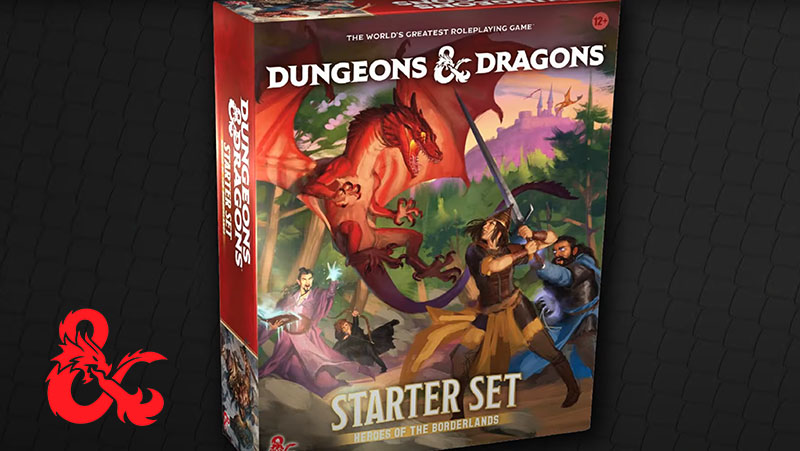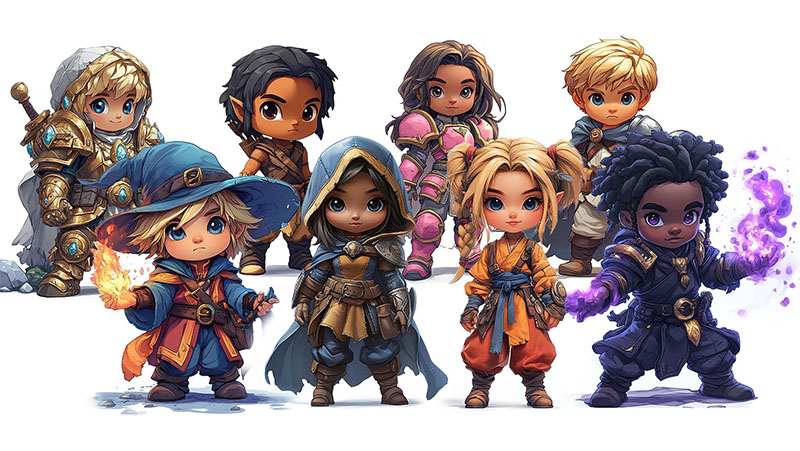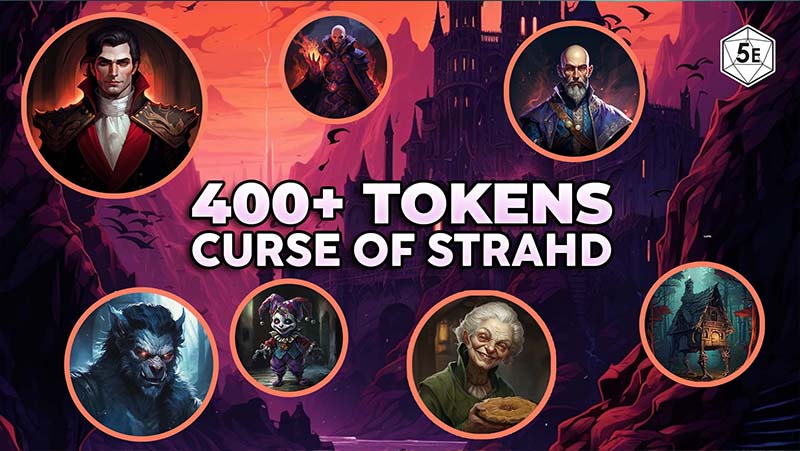Why Baldur’s Gate 3 is the Perfect Introduction to Dungeons and Dragons Rules
🎲 Baldur’s Gate 3: The Perfect Gateway into Dungeons & Dragons
Dungeons & Dragons (DnD) is a game of imagination, strategy, and storytelling. Yet, for newcomers, its complex rules—from class mechanics to combat actions—can feel overwhelming. That’s where Baldur’s Gate 3 (BG3) comes in.
This critically acclaimed RPG by Larian Studios isn’t just an incredible video game—it’s a brilliant crash course in Dungeons & Dragons mechanics. It translates the 5th Edition (5e) ruleset into engaging gameplay, giving players a practical understanding of core DnD mechanics while keeping things fun and accessible.
🎯 In this article, we’ll explore:
✔️ Why Baldur’s Gate 3 simplifies learning DnD rules.
✔️ How BG3 introduces classes, spells, and combat mechanics.
✔️ The key differences between BG3 and tabletop DnD.
✔️ Why BG3 is the best alternative to reading rulebooks.

⚔️ Dungeons & Dragons: A Game of Rules and Creativity
Dungeons & Dragons is often described as a game of imagination, but it’s not just free-form storytelling. The DnD ruleset acts as a framework that keeps the game balanced, fair, and immersive.
🔹 Why rules matter in DnD:
- Fairness: Ensures all players have equal footing.
- Consistency: Allows worlds and encounters to feel logical.
- Creativity Within Structure: Players can improvise within established guidelines.
However, these rules can feel intimidating to newcomers. The Player’s Handbook alone spans over 300 pages, detailing everything from spellcasting to combat conditions. Baldur’s Gate 3 helps simplify this learning curve by letting players experience these rules in action.

I would still recommend to get a version of the New rulebook, as it’s a mine for inspiration
🕹️ How Baldur’s Gate 3 Teaches Core DnD Mechanics
Baldur’s Gate 3 is not just inspired by Dungeons & Dragons 5e—it directly implements core mechanics in its gameplay. Here’s how BG3 introduces key DnD elements:
1️⃣ Character Creation: Classes, Subclasses, and Stats
The first step in Dungeons & Dragons is character creation—and BG3 nails this process.
🎯 Key Lessons from BG3’s Character Creation:
- Classes: Players choose iconic DnD classes like Cleric, Rogue, or Sorcerer.
- Subclasses: BG3 introduces subclasses at level-up (e.g., Eldritch Knight for Fighters).
- Ability Scores: Players assign points to Strength, Dexterity, Constitution, Intelligence, Wisdom, and Charisma, learning the impact of each stat on gameplay.
💡 In tabletop DnD, players roll dice to determine stats—BG3 uses point allocation, which is easier for beginners.

2️⃣ Spells, Abilities, and Actions – Understanding the Turn Economy
DnD combat revolves around action economy—and BG3’s turn-based system makes this concept easy to grasp.
🎯 What BG3 Teaches About Turn-Based Combat:
- Action, Bonus Action, and Reaction: Players learn the difference between spellcasting, attacks, and defensive reactions.
- Spell Slots: Players quickly understand spell limitations (e.g., Fireball requires a 3rd-level slot).
- Class-Specific Abilities: BG3 showcases class features like Rogue Sneak Attack or Cleric Channel Divinity.
💡 Tip: After a few BG3 sessions, you’ll know the difference between a cantrip and a levelled spell without cracking open the rulebook.

3️⃣ Combat Strategy: Dice Rolls, Advantage & Positioning
BG3’s combat system reflects DnD’s core mechanics with just enough automation to make learning intuitive.
🎯 Key Mechanics Explained Through Combat:
- Dice Rolls: Players see virtual dice rolls for attacks, skill checks, and saving throws.
- Advantage/Disadvantage: BG3 highlights when players get advantage (roll twice) or disadvantage (roll twice, take the lower).
- Positioning: The environmental system demonstrates the importance of height, cover, and distance.
💡 In DnD, you roll physical dice. BG3’s interface visualizes these rolls in real time.

4️⃣ Roleplaying & Storytelling – The Heart of DnD
While mechanics matter, DnD is fundamentally a roleplaying game. BG3’s branching narrative mirrors this experience perfectly.
🎯 How BG3 Encourages Roleplay:
- Dialogue Choices: Players choose responses based on personality, alignment, and goals.
- Skill Checks: Persuasion, Deception, and Insight checks teach social interactions from DnD’s core ruleset.
- Character-Driven Narrative: Players witness how choices impact the world—just like in a tabletop game.
💡 In a real DnD session, the Dungeon Master (DM) improvises based on players’ choices. BG3 shows how impactful player decisions can be.

⚖️ Key Differences: BG3 vs. Traditional DnD
While BG3 captures DnD’s core mechanics, there are notable differences:
| Aspect | Baldur’s Gate 3 | Tabletop DnD |
|---|---|---|
| Dice Rolls | Automated, visualized on-screen. | Manual rolling (d20 dice). |
| Combat | Turn-based with tactical camera. | Turn-based but theater-of-mind or minis. |
| Roleplay | Pre-scripted choices. | Infinite possibilities via DM. |
| Spellcasting | Adheres to 5e rules but simplified UI. | Manual tracking of spell slots. |
| Encounters | Predefined with scripted behaviors. | DM improvises (or not) and customizes. |
💡 Conclusion: BG3 simplifies the complexity of DnD, making it the perfect gateway to the tabletop experience.
🎓 How BG3 Prepares You for a Real DnD Session
Once you’ve played a few hours of Baldur’s Gate 3, you’ll:
✔️ Understand core mechanics like actions, movement, and spellcasting.
✔️ Recognize class archetypes and know how to build a character.
✔️ Be familiar with dice mechanics, advantage/disadvantage, and saving throws.
✔️ Get comfortable with roleplaying, choosing dialogue, and thinking creatively.
Note that many rules will still be slightly different in DnD, and you’ll have to adapt to them.
💡 Pro Tip: After playing BG3, join a DnD group and let the Dungeon Master correct the differences during the game. Learning through play is much more fun than reading 300 pages of rules.
🏆 Final Thoughts – Baldur’s Gate 3: Your DnD Starter Kit
🎯 Dungeons & Dragons may seem complex at first, but Baldur’s Gate 3 makes it approachable, intuitive, and fun. By immersing players in mechanics like dice rolls, spellcasting, and turn-based combat, the game teaches DnD rules naturally.
So, if you’ve ever wanted to learn how to play DnD but felt intimidated by rulebooks, start with Baldur’s Gate 3. Play, explore, experiment—and then, when you’re ready, bring that experience to your first real-life campaign.
🎲 Your adventure starts here!

Once you learned the basics by playing BG3, get yourself a copy of the Rulebook, it will help you understand the difference between DnD and BG3, it will help you be a better player or the perfect new DM to your group.





